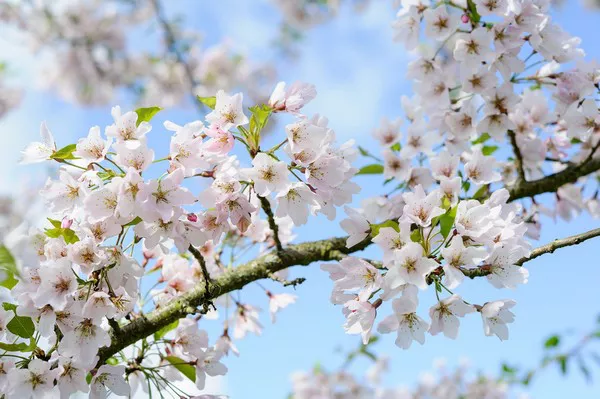Expressing remorse and seeking forgiveness are intricate aspects of human relationships, and throughout history, flowers have been used as a subtle and eloquent means of conveying sentiments. The choice of flower and its color can significantly impact the message being communicated. In the realm of apologies, each hue carries a unique meaning, providing a thoughtful and symbolic way to express regret. In this exploration, we delve into the world of flower colors and their associated meanings when expressing the sentiment of “sorry.”
White Flowers: The Purity of Apology
White flowers, with their pristine and unblemished appearance, symbolize purity and innocence. When chosen to convey an apology, white flowers express sincerity and the desire to make amends with a clean slate. White blooms, such as lilies, orchids, or roses, communicate a heartfelt apology devoid of any ulterior motives. This color choice suggests a genuine acknowledgment of wrongdoing and a sincere commitment to rectify the situation. White flowers offer a peaceful and gentle way to express remorse, aiming for a fresh start in the relationship.
Blue Flowers: The Tranquil Path to Reconciliation
Blue flowers, with their calming and tranquil aura, convey a sense of peace and serenity. Choosing blue blooms to express an apology suggests a desire for reconciliation and harmony. Blue flowers like hydrangeas or delphiniums symbolize calmness and understanding, indicating a commitment to resolving conflicts in a composed manner. This color choice can be particularly fitting when seeking forgiveness in situations that require a soothing and patient approach. Blue flowers serve as a visual representation of the calming presence one hopes to bring into the relationship.
Purple Flowers: The Regal Gesture of Apology
Purple flowers, associated with royalty and elegance, bring a touch of regality to the act of apology. When expressing regret through purple blooms like lavender or orchids, the message is elevated to a level of respect and admiration. Purple signifies admiration for the person receiving the apology and a recognition of their worth. This color choice communicates a sincere acknowledgment of the other person’s feelings and a commitment to treating them with the dignity they deserve. Purple flowers add a touch of sophistication to the apology, emphasizing the importance of the relationship.
See Also: How to grow butterfly pea flower?
Pink Flowers: The Tender Apology of Affection
Pink flowers, with their gentle and affectionate hues, convey an apology wrapped in tenderness. This color choice is ideal when seeking to express regret while also expressing warmth and fondness. Pink blooms such as roses or carnations symbolize admiration and appreciation, suggesting that the relationship holds a special place in the heart. Choosing pink as the color of apology communicates a genuine affection for the person receiving the message and a desire to mend the bonds of connection with sweetness and care.
Yellow Flowers: The Optimistic Apology
Yellow flowers, with their bright and sunny disposition, offer a sense of optimism and positivity in the act of apologizing. Choosing yellow blooms like sunflowers or daisies signifies a commitment to moving forward with a hopeful outlook. Yellow symbolizes joy and friendship, and incorporating this color into an apology suggests a desire to restore happiness and positivity to the relationship. Yellow flowers bring a ray of sunshine to the apology, infusing the message with an optimistic spirit for a brighter future.
Red Flowers: The Passionate Apology
While red is traditionally associated with love and passion, it can also be incorporated into apologies to convey the depth of one’s emotions. Red flowers, such as roses or tulips, communicate a passionate and sincere apology. This color choice signifies the intensity of the feelings involved and the genuine remorse felt for any hurt caused. While red is often associated with romantic love, in the context of an apology, it can express the depth of one’s emotional investment in the relationship and the earnest desire to make amends.
Orange Flowers: The Energetic Apology
Orange flowers, with their vibrant and energetic hues, symbolize enthusiasm and a proactive approach to reconciliation. Choosing orange blooms like marigolds or lilies suggests a dynamic effort to bridge any gaps and infuse energy into the relationship. Orange signifies a willingness to take action and make things right, expressing a commitment to positive change. This color choice can be particularly fitting when seeking forgiveness for actions that may have caused stagnation or negativity in the relationship.
Green Flowers: The Renewal of Apology
Green flowers, associated with nature and renewal, offer a symbolic gesture of growth and rejuvenation within an apology. Choosing green blooms like chrysanthemums or hydrangeas signifies a commitment to positive change and personal growth. Green symbolizes the renewal of the relationship and a desire to move forward with a fresh perspective. This color choice communicates a sincere acknowledgment of past mistakes and a commitment to learning and evolving for the betterment of the relationship.
Conclusion
In the intricate language of flowers, each color represents a unique sentiment, allowing individuals to convey apologies with elegance and sincerity. Whether choosing the purity of white, the tranquility of blue, the regality of purple, the tenderness of pink, the optimism of yellow, the passion of red, the energy of orange, or the renewal of green, the art of apology can be elevated through the thoughtful selection of blooms. By understanding the meanings behind flower colors, one can craft apologies that not only express regret but also convey a deep and nuanced understanding of the relationship dynamics, fostering healing and growth.


